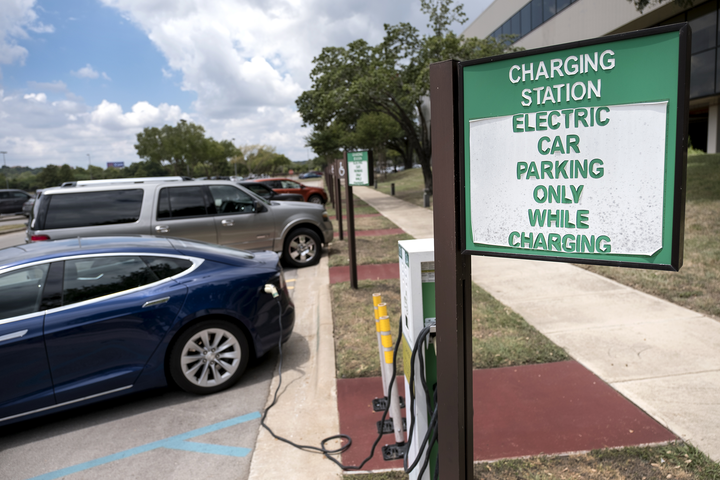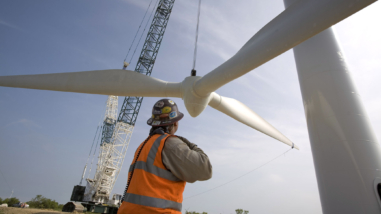Q&A with Anand Gopal: Tackling climate change through transportation solutions

Anand Gopal is a program officer for clean transportation with the foundation’s Environment Program. We spoke with Anand about our transportation strategy and how he’s working with grantees and partners to solve climate change by reducing vehicle emissions.
What drew you to this work? Why are you doing this work?
I grew up in a beautiful college campus in Chennai, India where my father worked as a professor. As a child, I loved to play in the woods around me. In college, my father gifted me Walden by Henry David Thoreau, which inspired a deep sense of awe and love for nature. I hiked the Himalayas and the Western Ghats in South India during my summer vacations. Around the same time, I also read Silent Spring by Rachel Carson, which opened my eyes to how severely people were polluting and degrading the environment. These experiences led me toward a career focused on addressing climate change, the greatest collective social and environmental challenge we face.
I have worked in climate and clean energy research in various capacities for more than 15 years. My research work has always been meant to inform policy to advance action on climate change. In the last five years, I have focused on cleaning up and transforming the transportation sector because there are no pathways to keeping global warming under a global average of 2 degrees Celsius (2C) without substantially reducing emissions from transportation, especially as it becomes the sector with the fastest growing emissions in many countries. I believe philanthropy has an instrumental role to play in advancing policy development and adoption and promoting the type of institutional change that we need in order to solve climate change.
What is the vision of our Environment Program’s transportation grantmaking strategy over the near-term and long-term? What does success look like?
Transportation has been a notoriously difficult sector to decarbonize. In many parts of the world, people need to be able to get around in a motorized vehicle, and demand will keep growing as incomes increase around the world. Until very recently, there were also no viable alternatives to oil as a fuel for transportation on the road, water or in the air. Over the last two decades, the grantee and philanthropic community have worked to improve the fuel efficiency of vehicles, but unfortunately, that will no longer deliver the emissions reductions needed to keep warming under 2C. Faced with this discomfiting reality and few options, complementary efforts have focused on reducing the demand for travel through better urban planning and public transit, but these have faced very steep political barriers and are difficult to scale.
Fortunately, in recent years, rapid technological advancements and cost reductions in batteries and in information technology have finally given the transportation community the opportunity to update their approach to successfully decarbonize transportation. Over the next five years, our strategy is centered on enabling policies that rapidly electrify both passenger and freight road transport in the U.S., Europe, China and India. More specifically, this electrification strategy will consist of (1) policies and financing solutions that increase the supply of zero-emission vehicles relative to combustion vehicles, (2) policies that leverage vehicle automation and shared mobility to restrict the use of carbon-intensive transport modes, and (3) policies and financing solutions to accelerate the rollout of electric vehicle charging infrastructure. Successful outcomes in the next five years include the adoption of meaningful zero-emission vehicle programs in the four main geographies, build-out of charging infrastructure at exponentially increasing rates, policies that effectively require vehicles that are fully automated or used for ride-hailing services be zero emission by 2030, and the adoption of meaningfully strong policies that puts road freight on a pathway to zero emission.
Aviation and shipping emissions continue to increase but technological pathways toward zero emissions for these modes are still uncertain, so for now, we will continue to work with our philanthropic partners to work toward policies that limit their emissions growth. In the longer term, we expect to increase our funding on aviation and shipping to eventually transition them to low or zero carbon.
What about cities?
We have found that real, scalable climate successes have been difficult to achieve through urban planning and public transportation alone, so over the next five years, our strategy will favor vehicle electrification over planning approaches at the city level. Our strategy will only support city efforts that work toward outcomes with one or both of the following effects: (1) positively affect the supply of zero-emission vehicles, (2) create political conditions that can rapidly spread to other cities. For example, if a few major cities institute zero emission zones within their urban core, automakers are likely to scale up EV production for fear of losing customers. And if cities pass aggressive policies that result in rapid deployment of charging infrastructure, demand for EVs will increase substantially. And if both New York and Los Angeles successfully institute congestion pricing for private, combustion vehicles, many American cities are likely to follow.
Who are the leaders? What are the innovations?
Over the last decade, most people – even clean energy advocates and researchers including myself – vastly underestimated how fast technology and business models can change the world of transportation. The slow pace of change over the previous four decades led to an orthodoxy, implicitly embraced by many of the leading experts in our field, that truly rapid transformational change toward clean energy and zero emission vehicles was not possible. The curators of this innovation explosion have been the policymakers of California and China who, in turn, were given a huge helping hand by the research and development investments of the United States, Europe and Japan between 1970 and 2000. California has led the way for several decades by repeatedly pursuing bold regulatory approaches, starting with tailpipe emissions standards to zero-emission vehicle requirements for passenger vehicles, to now, potentially a similar zero emission requirement for freight vehicles. China, which explicitly credits California with inspiring the design of its own zero emission vehicles program, is poised to adopt the most aggressive national zero-emission vehicle program in the world. The greatest Black Swan event in transportation has been Tesla Motors. I believe that the success of Tesla, which was built on the foundational policies discussed above, has further advanced the rate of transport electrification by forcing incumbent automakers to produce electric vehicles many years earlier than they were planning to. Given that we need even more accelerated transformational change to keep warming below 2C, I hope to support grantees who are learning the lessons of the last decade, stepping out of the orthodoxy and developing transformational solutions.
How are you planning to address equity issues around transport?
While technological transformation has been the story of the last decade, I believe that building an inclusive, broad movement to tackle climate change can be the greatest social transformation of the coming decade. Nowhere do we have a greater opportunity than in the transportation sector. The worst effects of our polluted, unsafe and congested transportation system are borne by economically disadvantaged communities and people of color. And while they stand to gain the most from a zero-emission transportation future, we have mostly failed to support these communities in our efforts to advance major clean transportation policies in the US. Inevitably, they are unable to envision themselves as part of the coalition to defend many of these hard-won victories as they come under threat from the Trump Administration.
While my grantmaking strategy will continue to remain focused on zero-emission vehicle futures, my grantmaking philosophy is to work toward those goals using a broad, inclusive approach. Many policy victories that were won using a primarily technocratic approach have not proven to be resilient in the face of political changes because we have not engaged the benefiting public at large to build support. I believe that an explicit focus on improved equity and better jobs will achieve politically-resilient victories, which is ultimately critical to climate success.



